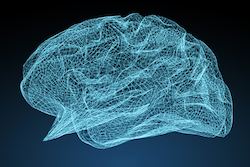Potential new route for obesity treatment
Thermogenesis is a metabolic process that receives much attention as the potential target of drugs that will boost fat burning and so reduce obesity. Previous hypotheses on the mechanisms governing the process revolved around the involvement of macrophages, a class of white blood cells. But a new study, partly supported by work done by the EU-funded DIABAT (Recruitment and activation of brown adipocytes as preventive and curative therapy for type 2 diabetes) project, suggests that the main driver of thermogenesis is the sympathetic nervous system. Published in Nature, the research suggests the brain, which chiefly controls the sympathetic nervous system, plays a bigger role than previously thought. The work, conducted by a team based at Mount Sinai hospital in America, focused on catecholamines, hormones released by the sympathetic nervous system to activate brown fat tissue. Brown fat tissue is burned to keep the body warm and the team was interested to find that catecholamines can turn white fat tissue into tissue resembling brown fat. In their paper, ‘Alternatively activated macrophages do not synthesize catecholamines or contribute to adipose tissue adaptive thermogenesis’, the scientists conclude relevant amounts of catecholamines are not synthesized and such activation is not likely to have a direct role in adipocyte metabolism or adaptive thermogenesis. They sum up their work as showing that the brain, through the sympathetic nervous system, is more implicated in the creation of catecholamines than macrophages. The new study indicates that a key to combating obesity in humans, and its attendant conditions, could be to restore control of thermogenesis and metabolism by the brain and the autonomic nervous system. Research results shine a light on how to deal with a major societal problem Thermogenic brown adipocyte tissue (BAT) is a major site for lipid breakdown and glucose uptake, and thus the thermogenic capacity of even small amounts of brown adipocytes has emerged as an attractive target for anti-diabesity therapies. Such therapies are urgently needed. The excessive expansion and dysfunction of adipose tissue in the obese state, type 2 diabetes and its associated complications have emerged as the leading causes of death in Western countries, associated with estimated health care costs of more than 30 billion euros in the European Union a year. Although the DIABAT project ended in 2015, the research it conducted is feeding into new ways of considering how to combat this growing problem. The project brought together universities, research institutions, a large biotechnological company and 2 SMEs to employ knowledge of the function, dysfunction and physiological regulation of brown adipocytes to develop innovative therapeutic and preventive strategies for type 2 diabetes. Their approach involved the integration of technological and and conceptual advances developed by the project's scientific and industrial partners. These advances included functional genomic insights into BAT biology as well as in-patient trials to overall develop innovative, energy-consuming, BAT-centered therapies for at-risk individuals and patients with type 2 diabetes. For more information, please see: project website
Countries
Germany



